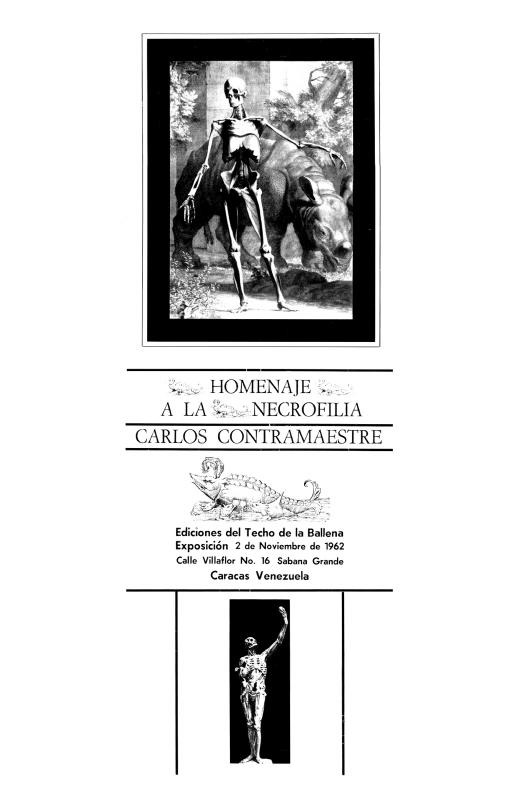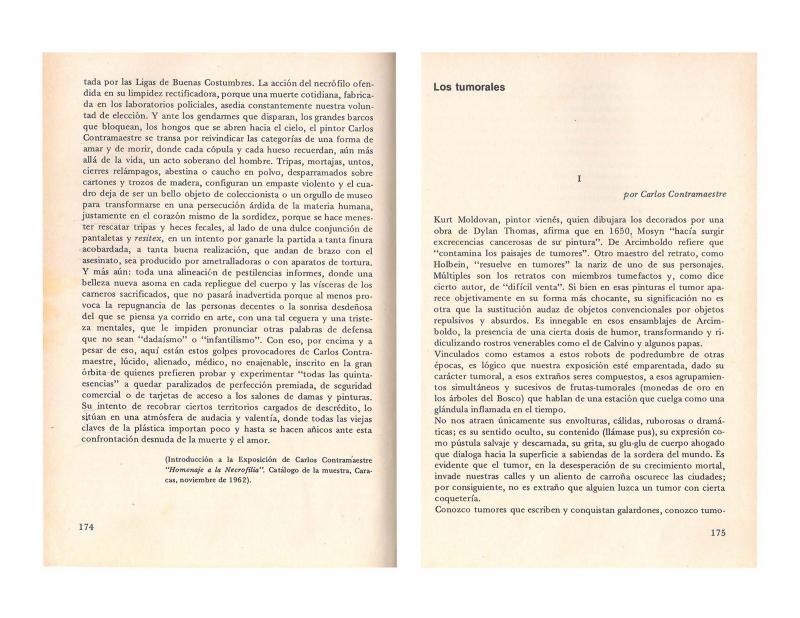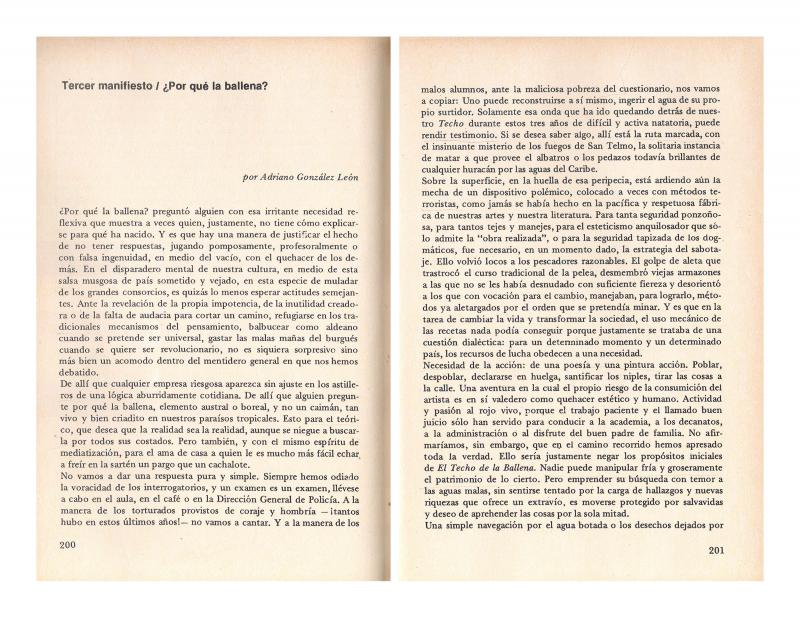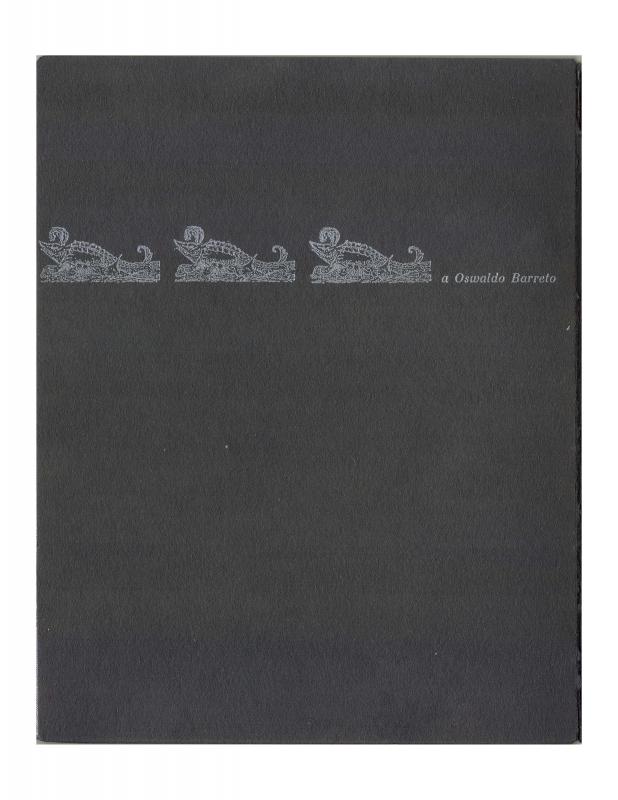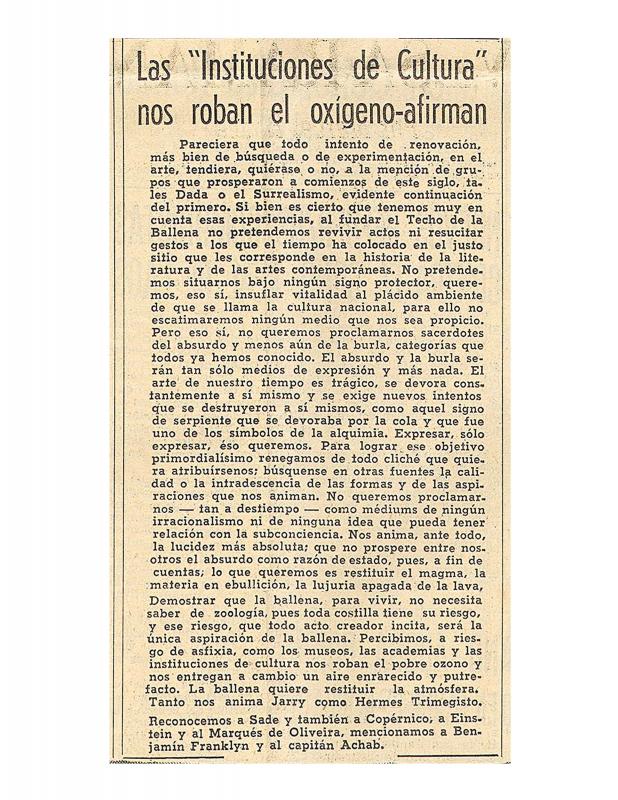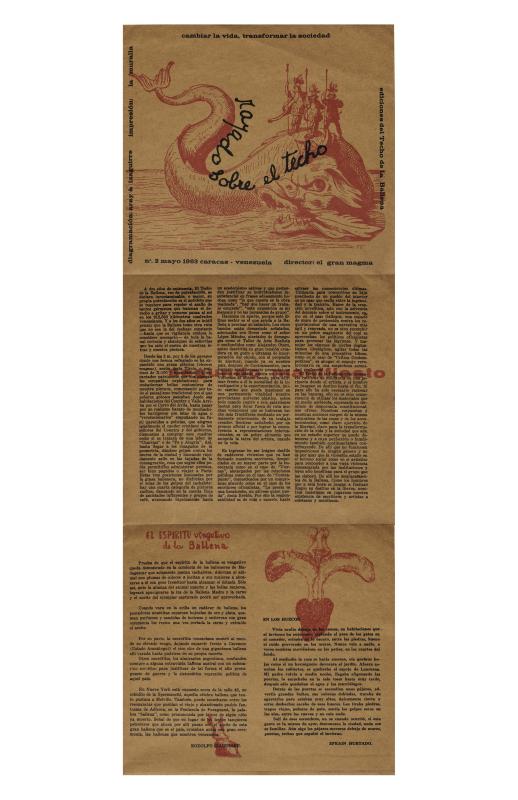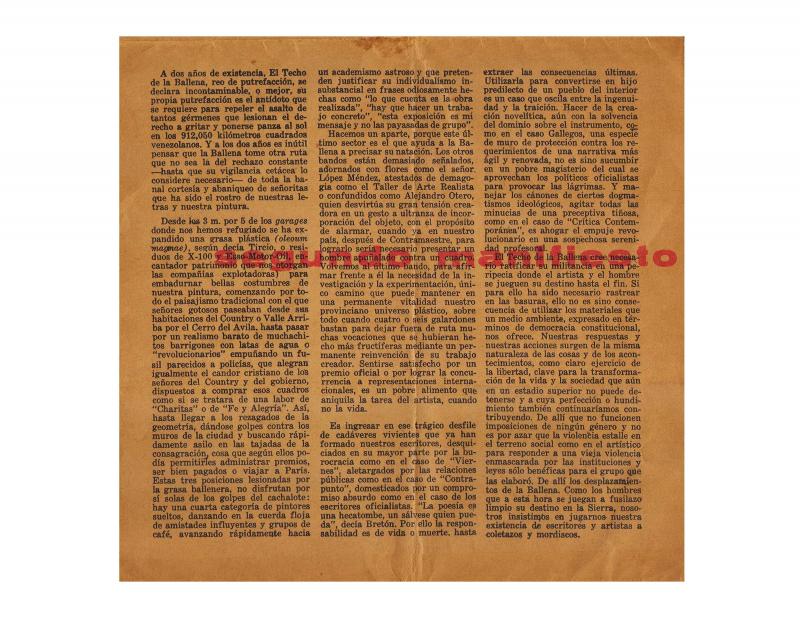This material seemed to be the model for the exhibition catalogue of Homenaje a la cursilería, an exhibition organized by the group El Techo de la Ballena (Caracas, 1961–68), held on May 7, 1961. The exhibition brought together objects and literary texts that the group considered "unfortunate." In the Venezuelan common language, "pava" means bad luck. The group intentionally uses this characteristic feature of ironically warning through wordplay and language attacking common topics, genres of literature, visual arts, and political and social stances that have become outdated.
The groupEl Techo de la Ballena was comprised of Venezuelan avant-garde visual art artists and writers who, between 1961 and 1969, combined their different disciplines—visual art, poetry, photography, cinema, and action art, among them—to create a revolutionary art that questioned and fought against the traditional, social, and cultural values during one of the decades in Venezuela known for its increased political violence and equivalent to the existent artistic Informalism at the time. The unconventional warfare, the intellectual leftist postulates, the repression, the deformed city brought about by the accelerated, forced and rising development of the Venezuelan democracy brought about by Rómulo Betancourt (1959−64) were the frame of reference in which the group unfolded. In the area of the visual arts, they embraced informal aesthetics with an added strong dose of aggressiveness to counteract the values of geometric abstraction, the traditional landscape, and even social realism; all together it was a subversive and provocative strategy, as well as one that was irrational and surreal. Their editorial publications were numerous—including three issues of the journal Rayado sobre el techo—as well as their exhibitions. Its members were among others, the Venezuelans Carlos Contramaestre, Juan Calzadilla, Caupolicán Ovalles, Edmundo Aray, Francisco Pérez Perdomo, Salvador Garmendia, Adriano González León, Fernando Irazábal, Daniel González, Gabriel Morera, Gonzalo Castellanos, Perán Erminy, and the integrated foreigners living in the country: Chilean Dámaso Ogaz and Spaniards J. M. Cruxent, Ángel Luque, and Antonio Moya.
For more texts written by the members of the group El Techo de la Ballena, consult the ICAA digital archives: “Homenaje a la necrofilia,” in which Adriano González presents an essay on love, death, and necrophilia, in which he introduces the work of Carlos Contramaestre that was exhibited in the 1962 exhibition Homenaje a la Necrofilia, at the gallery El Techo de la Ballena, Caracas (doc. no. 1097543); “Los tumorales I y II,” in which Juan Calzadilla and Carlos Contramaestre present the 1963 exhibition Los Tumorales by Contramaestre at the gallery El Techo de la Ballena, Caracas (doc. no. 1097559); “Tercer manifiesto: ¿Por qué la ballena?” by Adriano González León (doc. no. 1097576); and (untitled) [Hay ciertos rostros de la ciudad . . .] by Francisco Pérez Perdomo (doc. no. 1060288). Also consult the texts by El Techo de la Ballena: “Para la restitución del magma” (doc. no. 1060710); “Las ‘Instituciones de cultura’ nos roban el oxígeno, afirman” (doc. no. 1060199); Rayado sobre el techo: Cambiar la vida, transformar la sociedad (doc. no. 1060254); and “Segundo manifiesto” (doc. no. 1057677).

